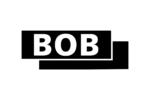The book "Design Patterns" was the trigger for the wave of publications and conferences dealing with patterns. The four authors of the book are often jokingly referred to as the "Gang of Four", hence the term "Gang of Four Patterns" (GoF Patterns for short) is sometimes used when trying to distinguish them from the multitude of other patterns.
Many of these patterns have proven themselves in countless software projects, and every programmer, designer, and architect involved in object-oriented software should have heard of them.
- Erzeugungsmuster (Creational Patterns)
- Factory Method
- Abstract Factory
- Singleton
- Builder
- Prototype
- Strukturmuster (Structural Patterns)
- Adapter
- Bridge
- Decorator
- Facade
- Flyweight
- Composite
- Proxy
- Behavioral Patterns
- Interpreter
- Template Method
- Observer
- Visitor
- Iterator
- Command
- Memento
- Strategy
- Mediator
- State
- Chain of Responsibility





















